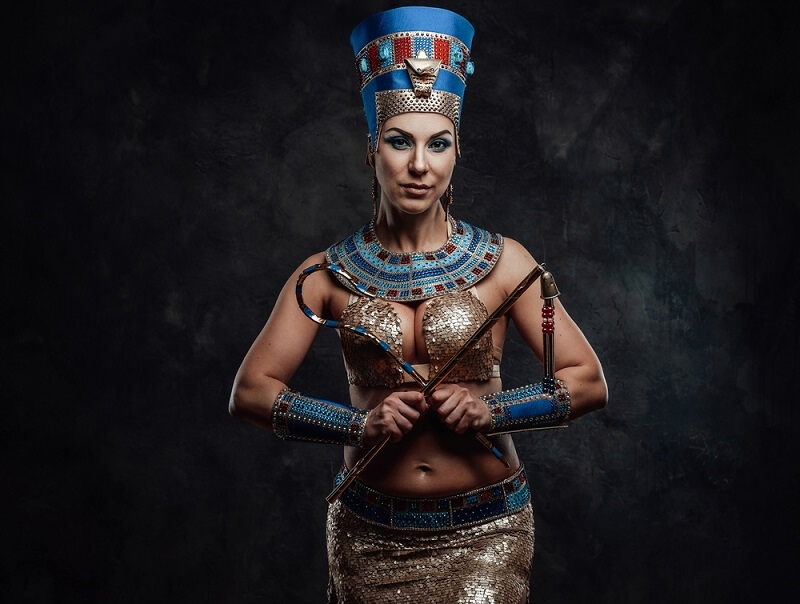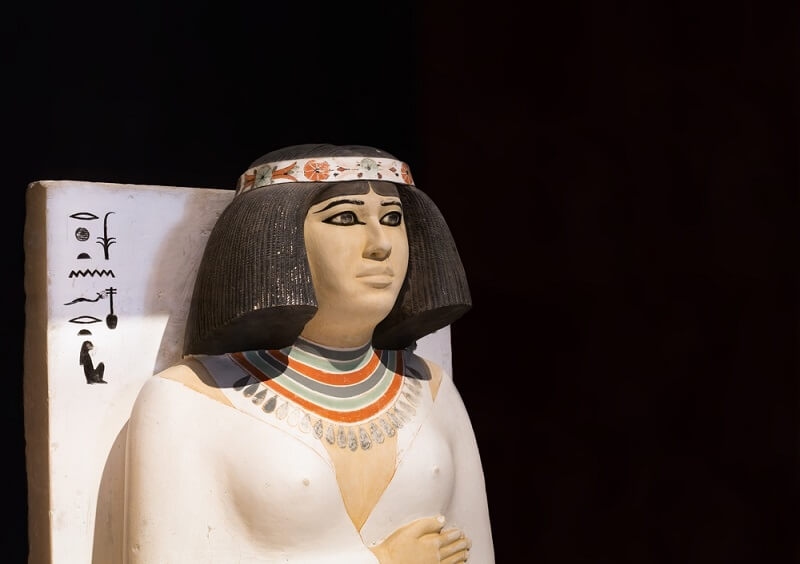
The social structure of ancient Egypt was one of the oldest civilizations and the most influential, and as such, very complex, characterized by a rather strict class system that defined daily life. However, among its most interesting facets is how it was applied in a manner where the appearance of personal hygiene, mostly through hairstyles, represented the person's status. This is the kind of society where status and rank were considered to be crucial, in a world that used hairstyle, or the absence thereof, as an expression of identity, social standing, and cultural norms, from the elite to the commoners, hairstyles in ancient Egypt mirrored the person's role within the broader societal framework. Whether it was the elaborate wigs of pharaohs or the simple grooming of laborers, hair always played a key role in emphasizing Egypt's rather complex social hierarchies. This blog explores the history of hairstyles among ancient Egyptians as well as how they symbolize cultural trends in status and other grooming rituals.

Hairstyle in ancient Egypt, therefore, is more of a social and cultural statement that has become representative of a particular set of norms associated with the societal hierarchy of the given time. There was a proper way every class of people depicted themselves, while the differences found in grooming pinpointed the level of social status possessed by an individual. The elite, consisting of royalty, priests, and high-ranking officials, sported elaborate and lavish hairstyles that symbolized their privileged status, while the lower classes followed simpler, more practical styles.
The most iconic symbol of Egyptian social class was probably the wig. Wigs were not just a fashion accessory; they were part of the grooming practices of Egypt's elite. Both men and women of high rank wore elaborate wigs made from human hair or synthetic materials, including plant fibers or wool. These wigs were often styled in complex braids, curls, or intricate headdresses. The higher the complexity and decoration of a wig, the more significant the person’s social status.
Wigs, especially among the pharaohs, were extremely ornate and usually had crowns or diadems. They confirmed their role not only as the rulers of Egypt but also as the mediators between the gods and the people. One of the best examples is the golden burial mask of Pharaoh Tutankhamun, in which wigs were used to symbolize not only royalty but also divinity. In art, pharaohs were consistently depicted with perfect, stylized wigs, emphasizing their celestial connection and the power they held over both the living and the spiritual world.
Hair in ancient Egypt possessed deep symbolic importance, especially about issues of power, purity, and divine right. To the upper class, a well-groomed look was a symbol of order and control, which had to do with the idea of divine rule. Wigs formed part of the grooming practice because they were so finely crafted and elaborately styled. They formed a symbol of authority and conveyed an air of dignity and divinity.
Interestingly, the grooming of hair was also associated with religious and spiritual beliefs. Many Egyptians believed that hair, especially on the head, was a vessel of strength and vitality. For example, many priests and priestesses shaved their heads as a symbol of dedication to purity and to the gods they served. They wore specific, simple wigs, reflecting their sacred role and separating their identity from the world of the laity. Then, the shaved head became a sign not just of spiritual devotion but also of clear demarcation of status a removal of any association with personal vanity, and a symbolic higher calling.
For the elite, grooming went beyond just the head. The use of oils, perfumes, and cosmetics was widespread among the upper class, as these products helped to maintain cleanliness and ensure that individuals appeared to be in perfect health. Perfumed oils were applied not just for personal hygiene but also to signify one’s wealth and adherence to cultural norms. Rich individuals had to appear effulgent and their personal care was an essential aspect of confirming their social status.
The lower classes, who were not as fortunate as the elite in keeping up complex grooming rituals, sported much more simple hairstyles, which were essentially practical. Most commoners had short hair because it was a functional and easy hairstyle to keep in the harsh climate of Egypt. Women had either worn their hair down or styled it in loose, simple fashions that didn't require much maintenance.
Even though less extravagant, the grooming practices of the lower classes still had symbolic value. For example, very expensive human hair or fine wigs were generally accessible to only the aristocrats. Some of the commoners could, however, wear cheaper wigs made of reed, palm fibers, or animal hair on special occasions. While inferior to those used by the ruling class, they still possessed social significance since it was through the wigs that individuals could fit the norms concerning personal appearance set forth by their societies yet in their own pocketbooks.
Another practical use of head coverings, such as scarves or simple headbands, was to shield the hair from the sun and dust for both men and women. These utility items also had class and gender connotations. For instance, lower-class women wore a simple cloth headpiece, while the wives and daughters of the wealthy used more elaborate head coverings that were decorated with jewelry or beads, signifying their higher class.
Hairstyles in ancient Egypt were not merely practical but part of cultural traditions that communicated various social messages. Hair and grooming were directly connected to religious activities, especially concerning the priesthood. Priests and priestesses have specific hairstyles involving shaved heads or simple wigs intended to show them as committed people to religious service and purity.
Fashion in ancient Egypt was cyclical, with the popularity of different styles unfolding during various dynasties. Although wigs were still donned by the elite of much of Egyptian history, varying dynasties had distinct fashion options for wigs and hairstyles. During the Middle Kingdom (around 2000 BCE), it became fashionable among both sexes to wear short bobbed hair. In contrast, during the New Kingdom (1550–1070 BCE), very elaborate wigs and hairpieces became the standard, especially for royalty and the wealthy.
Apart from these, rich people could afford jewelry and ornaments that complemented their hairstyles such as combs, pins, and decorative headbands. Not only were they aesthetic choices but also made from precious materials, such as gold, silver, and gemstones, further pointing to the social rank and affluence of the wearer.
Hairstyles in ancient Egypt were not merely personal grooming but a very small aspect of the mosaic of social hierarchies of a very complex society. Whether it's the elaborate wigs indicating the divine right of pharaohs or even the subtle cuts of commoners that reflected modest living, the organ on the top was a means to thoroughly express status and alignment with culture. The ancient Egyptians and their hair seemed to show just how embedded cultural trends and societal expectations were in everyday life. For the elite, hair meant purity, proximity to the divine, and political power. To the lower classes, grooming signaled modesty and purpose. As Egypt flowed through different dynasties and endured foreign influence, the connotations of hair remained a constant in reinforcing social order. Today, understanding the role of hairstyles in ancient Egyptian society offers valuable insights into the culture and its values, underscoring how personal appearance can transcend fashion and become a symbol of deeper societal structures.
This content was created by AI